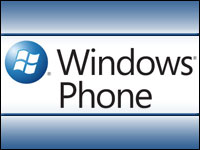
Google is rolling out an update to users of its Docs service allowing them to do more real-time collaborating and making a variety of speed and service enhancements.
Elements of the update began rolling out Monday, with others scheduled to filter out to users over the next few days, according to Google.
The update includes real-time collaboration on word documents, something previously available for spreadsheets. It also includes a sidebar chat window to discuss documents during collaboration sessions.
Other changes to the word-processing tool stem from a thorough reconstruction of the code underlying Docs, including better document format, and improved importing and exporting performance, margins and tab stops and image layout.
The new version of Docs also features more responsive spreadsheets that include a formula bar, auto-complete and drag-and-drop columns.
Improvements also include a new tool, a “drawing editor.” Despite its name, the tool doesn’t allow for freehand drawing, but rather focuses on creating flow-charts, designs and diagrams.
Collaboration Is ‘Edge Case’
The heavy emphasis on collaboration sounds good as part of a marketing plan, but isn’t likely to move the needle on adoption, said Forrester analyst Sheri McLeish.
“There’s a use case for it, but it’s probably not one that most information workers would have a need for,” she told the E-Commerce Times.
The Google Docs update does clearly go farther than Microsoft’s pending release in helping users with the edge case of being on a conference call furiously trying to hammer out changes to a document on deadline, analyst Melissa Webster told the E-Commerce Times.
Microsoft’s 2010 package likely won’t have the same level of instant feedback as Google’s nearly instantaneous, cursor-tracking live update, she said.
“Here’s Google doing them one better,” she said. “I think Google is sort of doing an ‘in-your-face’ move here, sort of to show off, but also to play to their strengths, which has been the sharing and real-time aspects.”
Microsoft, on the other hand, is going for a desktop feel to its Web app version of Office, reproducing the desktop client down to the ubiquitous menu ribbon, Webster said.
Office Well-Entrenched
However, few enterprises are interested in giving up years of third-party application development, user training and familiarity with Office to switch to Google Docs, real-time collaboration or not, Webster said.
Besides, with its next release of Office, Microsoft is opening up the cloud to users in a way that Google can’t currently match, Webster said.
That version will allow users of the feature-rich desktop version to share documents to the Web, where reviewers who don’t have the need for the dense feature-set of the desktop version can make changes and comments in near real-time.
Google can’t offer a similar workflow, Webster said.
Docverse Purchase Key
That makes Google’s recent acquisition of the startup Docverse more interesting than it might otherwise seem, she said.
Docverse makes a plug-in that enables Office users to collaborate in the cloud, eliminating frequent back-and-forth email sharing. The purchase could help Google provide a similar desktop-to-cloud workflow, transitioning Google Docs into something more of a translation and storage service between various platforms and user types, and belying notions that a cloud-only approach is the imminent future.
Webster said the acquisition suggests Google realizes a fully cloud-based solution isn’t a reality any time soon and is looking to meet Microsoft in battle on terms the Redmond software giant has already staked out — a combined desktop and cloud solution to be featured as part of its pending 2010 Office suite.
“It’s certainly where Microsoft is going, so Google has to worry about that,” she said.




















































